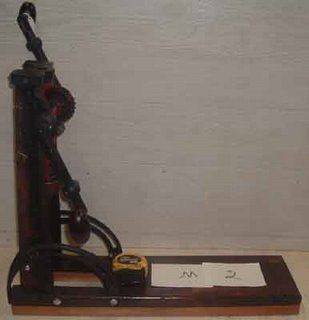 Background
BackgroundI have wanted to build a very small cabin in the woods for more than a decade. My interest started after reading Thoreau's
Walden in the spring of 1996, and then rekindled after reading Michael Pollan's
A Place of My Own sometime after that. I don't just want an existing pre-built cabin or a cabin from a kit. I want to build a cabin with my own hands and my own mind. I think that at least half of my fascination with a cabin in the woods is in the building of the cabin itself. The other half is in using and enjoying the cabin for decades later.
In 2004, my wife Jenny and I purchased some timbered land near our Moscow, Idaho home with the intention of eventually building a small "weekend retreat" cabin. While my wife fully supports my interest in building the cabin, she admits that her true passions lie elsewhere (mainly
quilting). Part of me wishes that she was as excited about the cabin as I, but part of me enjoys the freedom to make design and construction decisions without committee.
Why Timber Frame?One of the key decisions was to construct the cabin as a timber frame structure. I considered traditional stick frame, log cabin, and timber framing methods as well as others (straw bale, etc). But when I picked up
Jack Sobon's books on timber framing, I was hooked. The simplicity, durability, beauty, and honesty of timber framing convinced me that timber framing was the way to go. I was also inspired by the fact that many of the posts and beams could be harvested and milled by hand from trees on our land. It was also so simple to see how building a timber-frame cabin is a problem which is easy broken down to small, manageable parts and can be done by one or two people. I also liked the idea of having a frame raising party at the end of the process. The community aspect of an old-fashioned frame raising gathering in the woods sure sounds like a lot of fun.
Overall, I have finally decided on several key things:
1) Location on property (this was very hard!)
2) Construction method (Timber Frame)
3) Dimensions
There is a lot of learning and work left to be done. This will be exciting




